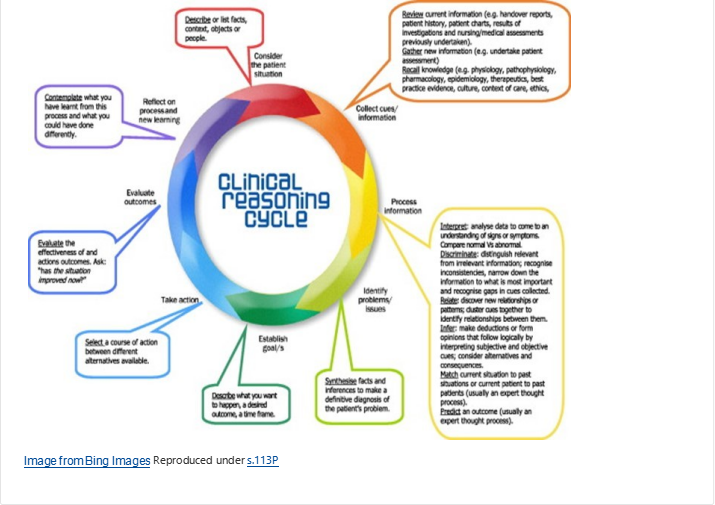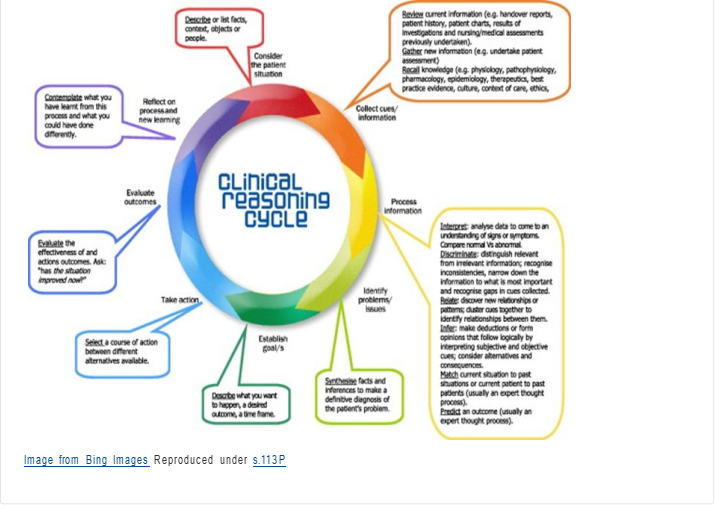Clinical Reasoning and Evidence-Based Nursing Practice NUR2203
- Subject Code :
NUR2203
Task Instructions
1. Read Case study (click to expand)
Read the Case study of Mrs Hill below:
Scenario - Mrs Jane Hill
Mrs. Jane Hill, a 78-year-old woman, has been admitted to the medical ward of Federation University Hospital with symptoms of lower abdominal discomfort, urinary frequency and urgency.
Medical History:
Hypertension: Managed with Amlodipine 5 mg daily.
Type 2 Diabetes Mellitus: Managed with Metformin 500 mg twice daily, and Optisulin 10 units mane. Chronic Venous Insufficiency.
No known allergies
Social History:
Lives alone in a small apartment with minimal social interaction.
Receives meals on wheels and has a visiting nurse weekly for diabetes management. The nurse reports that Mrs Hill has been confused over recent days.
On Examination:
Complains of burning sensation during urination and lower abdominal discomfort. Reports increased urinary frequency and urgency.
States she feels fatigued and has had chills intermittently. Not oriented to time/place.
Objective data:
Temperature: 38.2C Heart Rate: 98 bpm
Respiratory Rate: 20 breaths/min Blood Pressure: 140/85 mmHg Pain: 3/10 in the lower abdomen.
Urine sample: Foul smell, cloudy, positive for nitrites on dipstick testing. Resting in bed, appears fatigued but alert.
Work through the clinical reasoning cycle to detail the provision of evidence-based, person-centred care for your shift for Mrs Hill.

2. Plan nursing care plan using the clinical reasoning cycle (Levett-Jones, 2023)
Familiarise yourself with the clinical reasoning cycle outlined by the School of Nursing and Midwifery, Faculty of Health, University of Newcastle (2023) .
Use the clinical reasoning cycle to plan the care required for Mrs Hill. Students should use the information below under Create PowerPoint Slides to structure their response (i.e., create one slide for each element of the CRC).

3. Create PowerPoint Slides
Using the following headings as a guide, outline the nursing care required for the case using a PowerPoint presentation. Createoneslidefor each element (for a total of 9 slides including a final slide with references). Use bullet points on each slide and do not include too much text
- Consider the patient situation (1 min) Review Mrs Hills situation and identify any relevant Articulate your initial impression of Mrs Hill based on her current situation including the context, people and situation.
- Collect cues/information (2 min) - After reading through Mrs Hills story, what relevant cues and information can you identify? For
example, what current information is of interest, what other information or assessments might provide useful information? What signs and symptoms do you notice about Mrs Hills clinical presentation?
- Process information (2 min) - From the cues and information you collected in the previous phase, what inferences can you make? Are there any abnormal findings, cues to cluster together, or patterns that you can identify?
- Identify problems/issues (1 min) - Synthesise the facts and inferences of the information collected in the previous phase and
consider the most pertinent potential and actual problems for Mrs Hill. From this list,choosethemostrelevanthealth issue to discuss for Mrs Hill and provide reasoning for your choice.
- Establish goals (1 min) - Thinking about the health issue you have identified for Mrs Hill in the previous phase, identify one goal of
care for her.
- Take action (1 min) - Think about the goal you established for Mrs Hill in your previous How can you facilitate this as a nurse? What is the most appropriate nursing intervention?
- Evaluate outcomes (1 min) - If you were able to implement the above intervention, how would you evaluate the effectiveness of this care to ascertain if the action has improved her condition?
- Reflect on the process and new learning (1 min) - Reflecting on this process, identify your OWN strengths and areas for
improvement of working through the clinical reasoning cycle. Identify one area and discuss a plan for improvement of this element.
- Includea final slide with references (you will not need to provide audio for this slide).
4. Record asynchronous oral presentation (Video)
This assessment task is an asynchronous oral presentation (video submission). Students will only be able to submit a link to a video recording in the Moodle Assignment Submission portal. To do this, your video recording will need to be uploaded to your My Media Space in Moodle.
Use the suggested timing information in the above section on Creating PowerPoint Slides as a guide to how long to discuss each slide.
The video recording must clearly showbothvideo of you speaking (webcam recording) AND your slides (screen capture recording).
Studentsmustrecord the video usingKaltura:
- Studentscan use Kaltura Capture (free recording software available to use on a computer for all students) to record their screen and webcam while displaying the PowerPoint Slides and talking through your presentation. Instructions for using Kaltura Capture and then uploading the recording to your My Media Space are available in the Video Assignments Instructions for creating and submitting video assignments using Kaltura and my Media 5 Moodle Book in the Assessment Section.
- Once the video file is uploaded to your My Media Space you will be able to embed the video in the Moodle Assignment Submissionfolder (see Video Assignments Instructions for creating and submitting video assignments using Kaltura and my Media 5 Moodle Book in the Assessment Section).
|
Jump to... |
||

